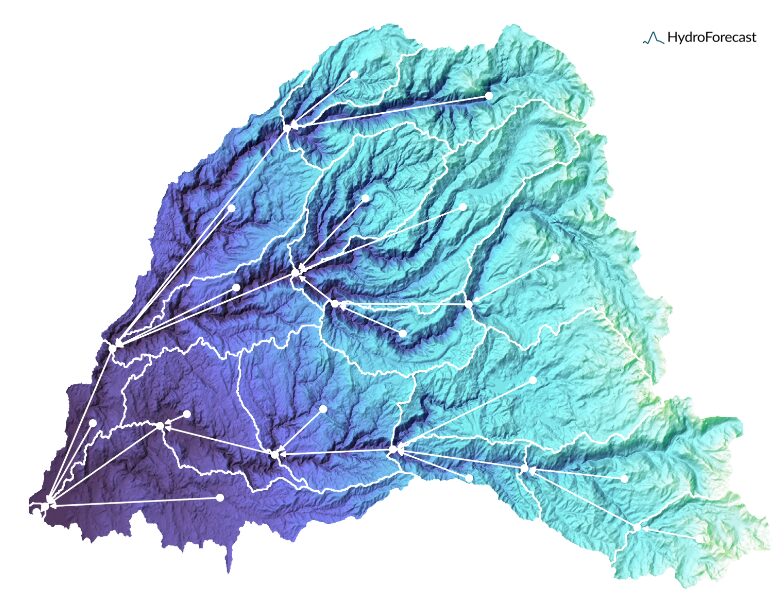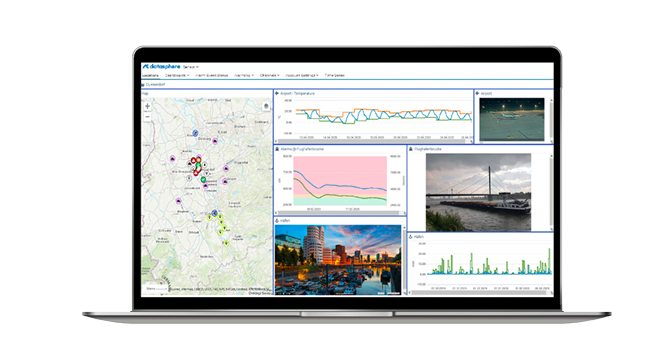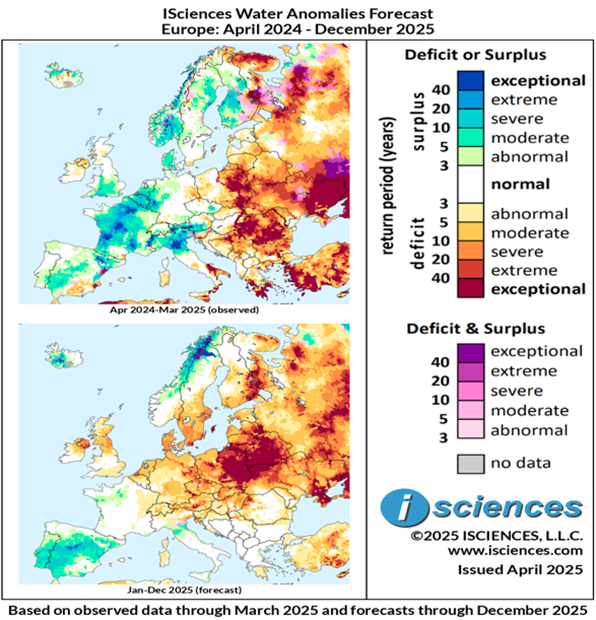The Forecast Is In: Legacy Water Systems Are Holding Us Back
4 September 2025

In a world of record droughts and surging demand for reliable water resources, decision-makers need speed, scale, and smarts. Here’s how one unique collaboration is delivering all three.
The Forecasting Revolution — Why AI Changes the Game
With HydroForecast, Upstream Tech provides accurate inflow predictions for virtually any point on Earth – without the need for local calibration, manual tuning, or historical datasets. Built on machine learning and remote sensing, the model updates continuously and performs with proven accuracy even in ungauged or data-scarce regions.
Combining these forecasts with KISTERS’ proven and adaptable data management and decision support technologies brings this revolutionary approach to forecasting within reach of everyone in the water and emergency management sector.
“This is decision support without borders,” says KISTERS’ Michael Thiemann. “HydroForecast can deploy anywhere in the world, no ground data needed – and still outperform traditional models. We offer the technology to harvest this information for advanced decision making for all.”

Previously, building a reliable forecast model could take 1–2 years and significant investment. Now, a small utility or irrigation board can subscribe and be up and running within weeks.
“HydroForecast was born out of the realization that historical models just don’t hold up in today’s climate,” said Matt Elgin, HydroForecast EU Market Lead at Upstream Tech. “We needed a tool that could learn from current data, adapt fast, and still be easy for teams to implement and trust in the field.”
Different Needs, One Ecosystem – A Package Deal
For small agencies:
HydroForecast paired with KISTERS’ datasphere enables real-time forecasts, alarming, and intuitive dashboards – all hosted in the cloud with no IT overhead. This agile solution meets the needs of under-resourced operators managing remote basins or single reservoirs who need fast, reliable data without added complexity.
For complex systems and big infrastructure:
HydroForecast sits atop the robust WISKI time series engine – a platform shaped by decades of use in mission-critical, high-stakes environments. From filling data gaps to flagging anomalies, WISKI handles it. And behind the scenes, KISTERS Analytics brings it all together – integrating HydroForecast flow forecasts, irrigation demand, reservoir operations, and even market pricing into probabilistic scenario modeling.
“This used to take 18 months and a lot of outside help,” says Michael Thiemann. “We’ve collapsed that timeline. Today, with the right tools, agencies can go from flying blind to operational foresight in a matter of months – not seasons or years.”

Anticipatory Intelligence for the Real World
In an era of climate volatility, rough estimates and gut-driven decisions are no longer enough. Operators need tailored, data-informed guidance delivered in real time.
From optimizing hydropower generation during peak pricing to minimizing downstream flood risks, the HydroForecast–KISTERS collaboration equips decision-makers with the foresight to make smarter, more balanced tradeoffs across competing priorities.
Think of KISTERS Analytics as the iOS – the unifying interface – of environmental modeling. It connects “apps” like HydroForecast, demand projections, and operations logic into one seamless environment for scenario testing, forecasting, optimization and timely action.
“In our work with European utilities and hydropower operators, the biggest win is when powerful forecasts don’t require a complete system overhaul,” said Matt Elgin. “HydroForecast was built to integrate smoothly with platforms like KISTERS – so teams can plug in better insights without reinventing their entire workflow.”
What This Means for Europe – And Why Now
Even traditionally water-abundant regions across Europe are no longer immune to drought extremes. From Scandinavia to Southern Europe, countries are experiencing intensifying temperature anomalies and prolonged rainfall deficits. In Norway, for example, spring and summer temperatures from 2018 to 2022 were up to 4.7 °C above average, with rainfall between May and September at only 18–46% of normal –marking one of the driest five-year periods on record (Climate Change Post). These conditions triggered widespread hydrological stress, including significant Norway spruce mortality driven by climate-induced forest decline. (Anders et al. 2025, Ecological Modelling)

Observed through March 2025 and forecast through December, this ISciences map reveals deepening water deficits across Central and Eastern Europe – signaling growing pressure on water agencies to respond to intensifying drought.
But this is not just a Nordic story. The 2022 drought was the most severe in Europe in over 500 years, affecting nearly two-thirds of the continent – from alpine catchments in Switzerland to critical river basins in Spain and Germany – and placing unprecedented pressure on hydropower, agriculture, and energy security. (Copernicus Climate Change Service)
- Climate volatility is the new normal: From alpine snowpacks to Mediterranean reservoirs, Europe is experiencing more extreme weather – erratic rains, hotter summers, and rapid swings between flood and drought – making water management increasingly complex.
- Time is a strategic resource: As climate extremes accelerate, agencies can’t afford to wait months or years to improve their forecasting capabilities. Solutions like HydroForecast + datasphere offer a fast track to operational foresight – delivered via a browser and deployable within weeks.
- Large or small, no one’s immune: Every actor in the water sector is now impacted by climate disruption. Yet how do smaller entities – with fewer resources and often less operational flexibility – get the situational intelligence they need to act decisively amid growing climate volatility?”
- Smart data is strategic equity: Affordable, quickly accessible forecasting levels the playing field, giving both metropolitan agencies and rural operators access to predictive tools once reserved for the well-funded.
As Europe faces mounting pressure to modernize its water infrastructure, the KISTERS – Upstream Tech collaboration proves that advanced forecasting and decision support aren’t reserved for major utilities or tech-savvy agencies. By combining AI-driven foresight with intuitive, scalable software, they’re putting powerful tools into the hands of everyone – from small-town reservoir managers to large-scale river basin authorities. It’s a smarter, more equitable way forward.
“Whether you’re the big guy running a critical dam or the small guy managing a single catchment, you deserve a seat at the table,” says Thiemann. “This partnership makes sure everyone can act on the same high-quality intelligence – no guesswork, no barriers.”
Ready to See It in Action?
This isn’t just a vision – it’s already happening. Join us for an exclusive webinar on October 7th, 2025 to see how AI-powered forecasting and integrated decision tools are transforming water management across Europe. Whether you manage a single catchment or an entire river basin, this session will show you what’s possible.
Spots are limited – register now to secure your seat.
https://www.kisters.eu/event/from-data-to-decision/
Visit kisters.eu or upstreamtech.com to learn more.